
Small Structures
Scope & Guideline
Connecting disciplines to drive scientific progress.
Introduction
Aims and Scopes
- Nanostructured Materials and Their Applications:
Research on the synthesis, characterization, and application of nanostructured materials, including their roles in energy storage, catalysis, and photonics. - Innovative Synthesis Techniques:
Exploration of new methods for creating nanostructures, such as chemical vapor deposition, electrospinning, and templating techniques, which enhance material properties. - Functional Properties and Mechanisms:
Investigation of the unique properties arising from nanoscale dimensions, including electronic, optical, thermal, and mechanical characteristics. - Interdisciplinary Approaches:
Encouragement of interdisciplinary research that combines principles from chemistry, physics, materials science, and engineering to address complex challenges in nanotechnology. - Sustainability and Environmental Impact:
Focus on sustainable practices in the synthesis and application of nanomaterials, including recycling and the use of non-toxic materials.
Trending and Emerging
- Electrocatalysis and Energy Conversion:
There is an increasing focus on electrocatalytic processes for energy conversion, particularly in the context of CO2 reduction and hydrogen production, driven by the need for sustainable energy solutions. - Biomedical Applications of Nanomaterials:
Research on nanomaterials for biomedical applications, including drug delivery systems, imaging agents, and therapeutic agents, is gaining traction as the demand for advanced medical technologies increases. - Self-Healing and Smart Materials:
The development of materials with self-healing capabilities and responsive properties is becoming more prominent, reflecting a growing interest in creating adaptive materials for various applications. - 2D Materials and Heterostructures:
The exploration of two-dimensional materials, including graphene and transition metal dichalcogenides, is on the rise, particularly their applications in electronics, photonics, and sensing technologies. - Environmental Remediation Technologies:
Research on nanostructured materials for environmental applications, such as water purification and air quality improvement, is trending as society seeks to address environmental challenges.
Declining or Waning
- Conventional Bulk Materials:
Research on bulk materials has decreased as the focus shifts toward nanoscale structures, which offer superior performance and unique properties compared to their bulk counterparts. - Traditional Energy Storage Systems:
There's a noticeable reduction in studies centered around conventional battery technologies, as the field moves towards advanced materials and hybrid systems that leverage nanostructures for enhanced performance. - Theoretical Studies Without Experimental Validation:
The trend of publishing purely theoretical studies that lack experimental validation seems to be waning, as there is a growing demand for empirical data and practical applications. - Generalized Nanomaterial Applications:
Publications focusing on broad applications of nanomaterials without specificity or innovative approaches are becoming less common, as researchers seek to highlight specific, impactful applications.
Similar Journals
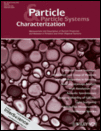
PARTICLE & PARTICLE SYSTEMS CHARACTERIZATION
Deepening Knowledge in Materials SciencePARTICLE & PARTICLE SYSTEMS CHARACTERIZATION is a distinguished journal dedicated to advancing the knowledge within the fields of Chemistry, Condensed Matter Physics, and Materials Science. Published by WILEY-V C H VERLAG GMBH in Germany, this journal has established a solid reputation since its inception in 1984, showcasing research aimed at understanding the intricate properties and behaviors of particulate systems. With an impressive Q2 ranking in its respective categories and Scopus ranks indicating a robust standing in the global research community, it serves as an essential resource for researchers, professionals, and students. Although it does not currently offer Open Access options, its comprehensive articles and reviews provide valuable insights that contribute significantly to the ongoing discourse in these scientific domains. As it prepares to celebrate four decades of publication, PARTICLE & PARTICLE SYSTEMS CHARACTERIZATION continues to provide a vital platform for emerging knowledge, fostering innovation and collaboration among scientists dedicated to the study of particle systems.
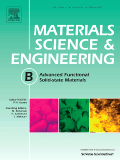
Materials Science and Engineering B-Advanced Functional Solid-State Materials
Pioneering Research in Advanced Material ScienceMaterials Science and Engineering B: Advanced Functional Solid-State Materials, published by Elsevier, stands as a pivotal platform in the realm of materials science, focusing on the development and characterization of advanced solid-state materials. With an ISSN of 0921-5107 and E-ISSN of 1873-4944, this journal operates out of the United Kingdom and addresses critical issues in condensed matter physics, mechanical engineering, and mechanics of materials. Its consistent recognition, evident in its Q2 quartile rankings across multiple engineering and physics categories and a respectable scope of convergence from 1988 to 2024, signifies its substantial contribution to the field. Researchers and professionals seeking a venue for cutting-edge work will appreciate the journal's commitment to advancing knowledge in functional materials, with its open access features ensuring that innovative findings are readily accessible. Join a community of leading scholars engaging with the latest advancements, shaping the future of materials science.
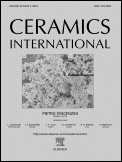
Ceramics International
Connecting researchers to the latest in ceramic technologies.Ceramics International is a premier journal published by ELSEVIER SCI LTD, focusing on advancing the field of materials science with a specific emphasis on ceramics and composites. With an impressive impact factor and a top-tier standing in several critical categories, including Q1 rankings in Ceramics and Composites, Electronic, Optical and Magnetic Materials, and Materials Chemistry, this journal serves as a crucial resource for researchers and professionals alike. Established in 1981, it has consistently showcased cutting-edge research in various domains, including surfaces, coatings, and process chemistry technologies, making it invaluable for those advancing theoretical and practical knowledge in these areas. While access is through subscription, the journal’s rich content, profound insights, and rigorous peer-review process ensure high-quality articles that contribute meaningfully to the scientific community. By fostering innovation and collaboration through rigorous research, Ceramics International stands out as an authoritative source for those dedicated to the evolution of materials science.

Inorganic Materials-Applied Research
Bridging Disciplines Through Inorganic InsightsInorganic Materials-Applied Research is a pivotal journal dedicated to the dissemination of innovative research in the field of inorganic materials. Published by SpringerNature, this journal operates as a vital resource for researchers, professionals, and students alike, providing a platform for cutting-edge findings and methodologies related to the synthesis, characterization, and application of inorganic materials. With an ISSN of 2075-1133 and an E-ISSN of 2075-115X, the journal strives to bridge gaps in interdisciplinary studies, fostering collaboration across the engineering and materials science domains. Despite its current rankings placing it in the Q3 quartile for both Engineering and Materials Science categories, the journal aims for broader impact, seeking to enhance its visibility and contribution in publications through rigorous peer-review and open access options. Converged from 2010 to 2024, it remains committed to advancing knowledge and addressing contemporary challenges in materials science, thereby attracting contributions that are not only academically rigorous but also socially impactful.

Materials Futures
Connecting researchers to shape the future of biomaterials.Materials Futures, an esteemed journal published by IOP Publishing Ltd, stands out as a pivotal resource in the field of Materials Science, with a particular emphasis on Biomaterials. Launched in 2022 and operating under an Open Access model, the journal aims to foster accessibility and rapid dissemination of pioneering research, thus catering to the diverse needs of researchers, professionals, and students globally. With a commendable Scopus Rank of #46 out of 137 in its category, placing it in the 66th percentile, and recognized as a Q1 journal as of 2023, Materials Futures provides a vital platform for cutting-edge studies and innovations that address contemporary challenges in materials science. As the journal evolves through its convergence period from 2022 to 2024, it continues to attract high-quality submissions aimed at advancing knowledge and applications within the biomaterials sector, reflecting its commitment to contributing vital insights and fostering collaboration across disciplines. Explore Materials Futures for your research endeavors and join a community dedicated to shaping the future of materials.
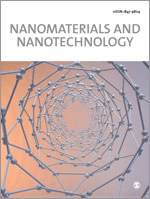
Nanomaterials and Nanotechnology
Unveiling the Potential of Nanoscale ApplicationsNanomaterials and Nanotechnology is a premier journal published by HINDAWI LTD, dedicated to advancing knowledge in the rapidly evolving fields of nanomaterials and nanoscale applications. Established as an Open Access platform since 2011, the journal aims to disseminate high-quality research that provides insights into nanotechnology's manifold aspects, including biotechnology, ceramics and composites, as well as electrical and electronic engineering. With a compelling impact factor reflected in its robust Scopus rankings—placing it in the 80th percentile in Engineering and the 72nd percentile in Biotechnology—it stands as a key resource for researchers, professionals, and students seeking to stay at the forefront of innovation in materials science. The journal occupies a distinguished position in the academic community, featuring studies that explore the synthesis, characterization, and application of nanomaterials, thereby contributing significantly to scientific discourse and technological advancement in this critical area.

CELLULAR POLYMERS
Fostering Interdisciplinary Insights in Polymer ScienceCELLULAR POLYMERS, published by SAGE Publications Ltd, is a leading journal dedicated to the exploration and advancement of polymer science, particularly within the realms of organic chemistry and materials science. With an ISSN of 0262-4893 and E-ISSN of 1478-2421, this journal has been a critical resource for researchers and professionals since its inception in 1982, continuously evolving to retain its relevance in an ever-advancing field. Currently, it ranks in the Q3 quartile for both Organic Chemistry and Polymers and Plastics, reflecting its focused contributions to these disciplines. Despite accessing content through subscription, the journal’s indexed visibility in databases such as Scopus, with a percentile ranking of 41st in its category, highlights its significance in the academic community. CELLULAR POLYMERS serves as a platform for innovative research and developments in polymer processing, characterization, and applications, aiming to foster interdisciplinary collaborations and knowledge dissemination among scholars, practitioners, and students alike.
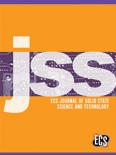
ECS Journal of Solid State Science and Technology
Advancing the Frontiers of Solid State ResearchECS Journal of Solid State Science and Technology, published by the Electrochemical Society, is a prominent journal dedicated to the advancement of research in the field of electronic, optical, and magnetic materials. With an ISSN of 2162-8769 and an E-ISSN of 2162-8777, this journal has established a significant presence since its inception in 2012, spanning critical developments in solid-state science that are essential for innovative technologies. Operating within the United States and recognized for its global outreach, it holds a respectable Q3 category ranking in the materials science category as of 2023, reflecting its commitment to high-quality research and its role in bridging theoretical and applied aspects of materials science. Researchers, professionals, and students alike will find vital information and cutting-edge studies that further the understanding and applications of solid-state technologies. The journal is accessible to an extensive audience, making it an invaluable resource for those engaged in the ever-evolving landscape of materials science.

Solids
Advancing Knowledge in Materials and ApplicationsSolids is a distinguished peer-reviewed journal published by MDPI, dedicated to the comprehensive exploration of the properties, applications, and advancements in solid materials. Starting its journey in 2020, this Open Access journal provides a dynamic platform for researchers and professionals in the fields of physics, astronomy, materials science, and chemistry, enabling them to disseminate their findings to a global audience without barriers. With an emerging presence in the academic landscape, Solids has established a reputation reflected in its Scopus rankings, including a commendable position of #28 out of 81 in Physics and Astronomy and #83 out of 196 in Materials Science, demonstrating its impact and relevance within these vibrant fields. The journal's objectives extend to fostering interdisciplinary discussions and collaboration, making it an essential resource for those seeking to advance their understanding of solid materials and their innovative applications. Researchers and students alike are encouraged to contribute to this essential dialogue, engaging with the latest research and insights in solid-state science from around the globe.

Zeitschrift fur Kristallographie-Crystalline Materials
Exploring the Depths of Crystalline InnovationZeitschrift für Kristallographie-Crystalline Materials is a prestigious academic journal published by Walter de Gruyter GmbH, focusing on the intricate field of crystallography and its applications within condensed matter physics, inorganic chemistry, and materials science. Established in Germany, this journal spans a rich history from its inception in 1930 to its convergence years from 2012 to 2024, presenting cutting-edge research and developments in crystalline materials. With an impact factor reflective of its critical role within its field—ranking Q3 in the prestigious quartiles for 2023 across multiple categories—this journal serves as an essential platform for researchers, professionals, and students seeking to expand their knowledge and contribute to the advancement of crystalline materials. While currently not offering open access, the journal remains committed to disseminating high-quality, peer-reviewed articles that inspire innovation and collaboration within the scientific community.